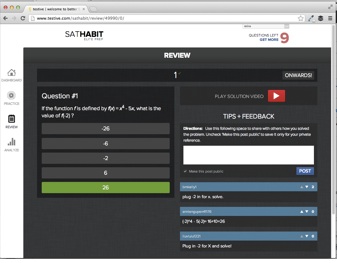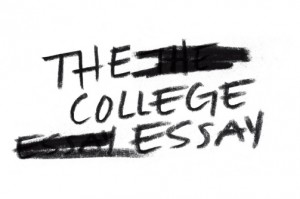….and In Defense of Distracted Students.
Over my 10 years as a teacher, I’ve taught nearly every age group. Above all, I have the most sympathy for the challenges of my teenage students. Teenagers’ reputations of being impulsive, difficult, and outright defiant are well-deserved. If you are trying to push your teen toward an improved SAT score and better college opportunities it can be frustrating.
That’s why I developed SAT Habit, a personalized SAT Prep service, designed for families without the time for or access to high-end professional tutoring. Here are the top challenges I think all parents need to think about when considering test prep:
1. Raising SAT Scores requires students to understand where they are starting from and the benefits of a higher score
Before students can raise their SAT scores they have to make an honest commitment to do the work involved. The distractions of teenage life are irresistible without the student making a commitment.
The best way to motivate students to prep is show them where they would currently score and the benefits of raising that score. While this doesn’t work for everyone, it’s a necessary first step. SAT Habit shows students where they currently stand in less than 30 minutes per section (compared to traditional practice tests, which are over three and a half hours in total).
With a baseline score, families can understand the impact of raising that score and decide to re-focus student time from other activities.
2. It’s too easy for students to do SAT “practice” or attend a class without ever improving their scores.
 There’s a school of thought that the best way to improve on the SAT is to simply do lots of problems until you get them all right. This approach works for some, but most have to do thousands of problems before they see dramatic improvement: that’s hours a day that students and families don’t have.
There’s a school of thought that the best way to improve on the SAT is to simply do lots of problems until you get them all right. This approach works for some, but most have to do thousands of problems before they see dramatic improvement: that’s hours a day that students and families don’t have.
They key to improving faster is mindful reflection. Students have to be able to explain to themselves why got they a question wrong. This is basically the entirety of what I do with students as a professional tutor. I find their weak areas and push them to reflect on why they are getting questions wrong. Then we work together on knowledge gaps and improvement strategies.
SAT Habit pin-points weak areas faster than I can as a human and is the only prep service that forces students to reflect on why they get questions wrong and follows it up with strategies to get each question correct.
3. It’s impossible to stick with it if you can’t see results
While making the initial commitment to test prep is tough for most students, sticking with it can be even harder. Traditional test prep either forces students to take multi-hour, full-length practice tests or relies on a tutor’s assurances that students are getting better.
Technology allows students instant feedback on nearly every aspect of a their lives. That’s why we built SAT Habit’s algorithms to show students in real time how their scores are changing based on their practice results. A study conducted at MIT found that the average student raises his or her score by 100 points on SAT Habit in just seven study sessions.
________________________









